I get a number of questions from readers asking if “X” is considered cheating in art. My answer is usually the same across the board – nothing is really cheating as long as it helps you create what you want to create and that your integrity remains intact.
Below are some of the questions and my brief thoughts. You may have a different opinion. Feel free to share in the comments if so. In this post, I cover:
- Is It Cheating to Trace?
- Is It Cheating to Use a Grid?
- Is It Cheating to Use Reference Photos?
- Is It Cheating to Use Editing Software?
- Is Digital Art Cheating?
- Want to Learn More?
- Thanks for Reading!
Is It Cheating to Trace?
I think tracing is the closest thing you can get to actually cheating in art. I remember doing it when I was a child and had no idea about drawing. Whilst it may help you draw with great accuracy, it will most likely cripple you in the long run as you will not develop your freehand drawing ability. It is like riding a bike and never taking off the training wheels.
But, tracing can be useful if you only want to focus on color and tone. It will save you some time and provide you with a quick template to apply your colors.
Is It Cheating to Use a Grid?
A better alternative to tracing is to use a grid to assist your drawing. All you need to do is place a grid on your canvas and a grid on your reference photo and then try to match the segments. I do not consider this to be cheating, provided you do not rely on the grid too much.
I sometimes do this for large-scale paintings to ensure all the shapes and lines are roughly in the correct places.
Just be careful that you do not fall into a “paint-by-numbers” approach, where you try to accurately copy the reference photo segment by segment. Try to use the grid as a rough guide only, not as a crutch.
I used my grid tool to assist me with the initial drawing in the painting below.


Is It Cheating to Use Reference Photos?
Back in old master times, photography was relatively primitive at best compared to what we have today. The masters often painted from life rather than from reference photos.
I do not consider reference photos to be cheating, but rather a useful tool for artists. Reference photos allow you to capture a point in time, zoom-in, crop, alter and inspect the colors. This is not possible when painting from life.
But reference photos are not perfect and there are many advantages to painting from life. With a reference photo, you cannot touch, smell or see the surrounding context of the subject. Also, whilst photos are great for capturing a point in time, they cannot capture how you see and interpret the subject.
Is It Cheating to Use Editing Software?
Here is where we start to merge traditional art with digital art. I think that traditional artists who take advantage of editing software are at a great advantage to those who choose not to.
It is not cheating, provided you are not altering photos of your paintings significantly to make them look better on a computer than they actually are in real life. In most cases I would consider that to be cheating as it seems disingenuine.
I frequently use Photoshop to clean up and inspect a reference photo before I start painting. Some artists take it to the next level and move objects around in the reference photo but I prefer to paint it how it is.
Using the reference photo below and editing software, I am able to identify with complete accuracy what certain colors are. This is valuable information because sometimes our eyes see colors which are not actually there.

Is Digital Art Cheating?
Of course not. Digital art is just another medium. It is no different to oil painting, watercolor or drawing. The only difference is you are using a digital brush or pencil to create your art. With that being said, I do prefer the physical nature of traditional art. To me, there is nothing like the feel of brush to canvas, or pencil to paper.
Want to Learn More?
You might be interested in my Painting Academy course. I’ll walk you through the time-tested fundamentals of painting. It’s perfect for absolute beginner to intermediate painters.
Thanks for Reading!
I appreciate you taking the time to read this post and I hope you found it helpful. Feel free to share it with friends.
Happy painting!
Dan Scott

Draw Paint Academy


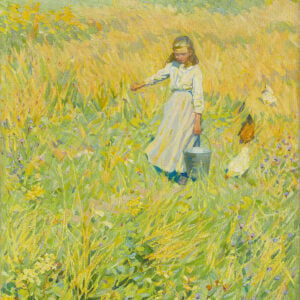
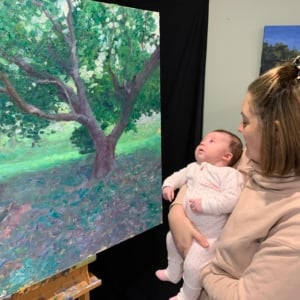
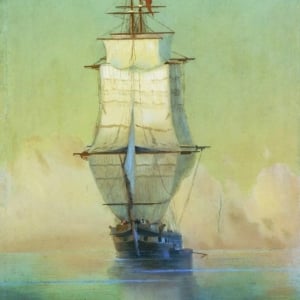
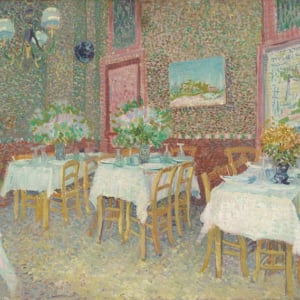
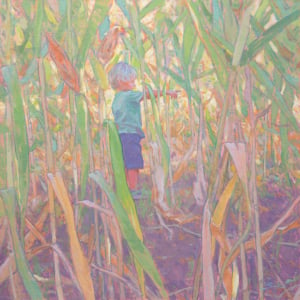
I work in pastel. It is a medium that requires museum quality lighting to show it off to it’s best effect. Artists say,you should work in that same light to create the painting, to which I agree. Problem is that that same painting would turn dull and drab in the wrong light. I believe that photographing your painting and putting into a digital photo manipulation software program and making the adjustments such that it won’t require museum quality lighting,( which hardly anybody has in their home) will also allow you to produce copies at lower prices and then more people could then enjoy them while you retain the original artwork for exhibits.
the solution to photographing your artwork is to photograph it in natural daylight while the sun is not shining directly on your art but rather illuminating it to bring out the best color. I’ve been doing this for many years successfully. No Photoshop manipulation required afterwards at all.
Thankyou! I have a hard time getting a good picture!
A good SLR camera is a must for artists who sell their work. I use a Nikon but there are others just as good.
Good luck!
Linda,
I guess I didn’t explain myself very well. I don’t have a problem with photography. The problem is that if you “paint” the artwork under the correct lighting (museum quality) …in order to get the proper display at an exhibit, you would need museum quality lighting. So…if a person pays hundreds or thousands of dollars for a painting, you can be pretty sure they will have it lit properly where they display it. So if you make a print that sells for $50-$100, chances are it will not be lit as you would an original pastel or oil that literally glows from light bouncing off the particles of pigment.
Since you can’t depend on the lighting of the purchaser, you tweek the painting in a manipulation program to make it stand out while hanging on someone’s wall under less than optimum lighting.
Now I understand what you’re saying, and I agree. People who buy a print may be making the purchase decision under one kind of light but displaying it at home under another kind of light. I think, with clear communication about what you do to the purchaser, what you are describing is more than legitimate!
The solution to photographing your artwork at home is to photograph it in natural daylight rather than indoors with lighting. Ideally, no sun shining directly on your art but rather illuminating it to bring out the best color. I’ve been doing this for many years successfully with my oil paintings. No Photoshop manipulation required afterwards at all.
In all above references except of course tracing another artisit’s work, can you sign your name below. Thanks for all the advice.
the solution to photographing your artwork is to photograph it in natural daylight while the sun is not shining directly on your art but rather illuminating it to bring out the best color. I’ve been doing this for many years successfully. No Photoshop manipulation required afterwards at all.
For one aspect of my artwork, I trace. Many famous and not so famous artists have used tracing in their artwork. I don’t see a problem with drawing basic linework this way. It’s what you do with it that counts and that’s where you can express yourself artistically. In my opinion its no better or worse than using grids. Just what I think. Cheers
Agree.
Interesting discussion. First, tracing is not cheating IF you are working from your own initial drawing or photo. Now tracing IS cheating if one is copying someone else’s work and claiming it as their own. That is plagerism and it is just- no. Second, copying a masters work to learn technique or composition etc. and acknowledge the original is not cheating; artists have been doing this for generations. This post is getting too long so let me recommend an art survey 101 class at a local community college,if you haven’t had the privilege. You’ll learn all kinds of interesting things!
Dan Scott you have an accomodation of the practices of several eminent ‘artists’ that far exceeds my ethos. I don’t consider several leading lights could even spell ethics given their behaviour.
For example, Caravagio’s usage of apparemtly a ‘pin hole camera’ to compensate for his secret lack of drawing skills does not sit well with my position. Likewise Vermeer’s use of a camera obscura in lieu of drawing abilty rankles.
These two above could reasonably claim to simply be focussing on the painting task, which could be acknowledged from the results achieved as the art world does. However I would place them in the painting by numbers catagory.
Should we their critics extrapolate from their faux skills and cast a suspicious eye in the direction of their supporters for what could likewise prove to be cheating?
Kind regards, Ernest Treagus
I totally agree with your posting. Looks like talent would win out but I guess our world has become a society of blurred lines on self evaluation when actions seem a bit dishonest. I guess I respect the masters more every day because the technology did not exist to create dishonest artwork when they produced their works. Sort of sad really to think our time will never produce a truly great master artist/painter because of the very technology most depend on to define them.
Happy New Year!
Linda
Thanks for the insight Dan. I cannot imagine doing any of my art through tracing! As a very young child, maybe 5 or 6, I did trace pictures to use as coloring pages but never considered them mine. A true artist, not painter, will draw or line in a subject to create a lifelike piece of artwork. I personally don’t even line off subjects in my paintings before putting paint on canvas. But that is just me and my opinion. Each person has to decide what is right and wrong for them.
Also, I have never even thought of using any type of manipulation when either painting or photographing my work. Where in the world did all that come from? Guess I am just old and learned at an early age to only take credit for what I actually did and never try to be someone or something I was not.
Happy Painting!
Linda
The Masters did cheat! Some used cameras and mirrors and pin holes and it started around the Renaissance when suddenly artists were able to illustrate perspective. Why? Study this: Secret Knowledge: Rediscovering the Lost Techniques of the Old Masters https://g.co/kgs/svnbRV
No different to a modern writer running an editing program over the draft. Or a composer writing a piece as a theme based on the work of another composer, but with a new spin. Where do we stand with a painting based on a small photo that has be greatly magnifies, then pixelated, gridded etc. The only original thing is the imagination to do it, and the skill to execute it.
https://www.thoughtco.com/camera-obscura-and-painting-2578256 suggests (and quotes the research on this by David Hockney) that this sort of “cheating” has been going on since the Renaissance. Do we like it less when we find out how it was done or are the end results what really matters? I’m not a purist, I use photographic aids when helpful, but I can tell you for certain that when I create a painting it is an original work and nobody would paint it the same. Are we lesser artists because we use prepared paints? Are we lesser artists because of other advantages of living in a modern day? If the final artwork is beautiful then I’m okay with it.
Having seen a traced painting given a big prize without the judge knowing that it was intricately traced, I now strongly object to tracing in a competition setting, unless the artist makes it clear … even if the photo was original to the artist. (In this particular case the photograph didn’t even have a composition aspect to it.) I feel that the judge was deceived because he surely was assuming drawing talent as well as reproduction talent.